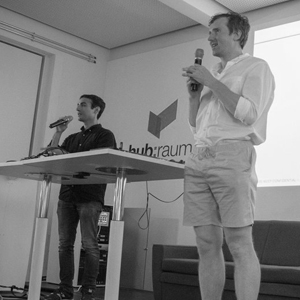- Technology
- SEE MORE
- classical
- general
- talk
- News
- Family
- Bürgerfunk
- pop
- Islam
- soul
- jazz
- Comedy
- humor
- wissenschaft
- opera
- baroque
- gesellschaft
- theater
- Local
- alternative
- electro
- rock
- rap
- lifestyle
- Music
- como
- RNE
- ballads
- greek
- Buddhism
- deportes
- christian
- piano
- djs
- Dance
- dutch
- flamenco
- social
- hope
- christian rock
- academia
- afrique
- Business
- musique
- ελληνική-μουσική
- religion
- World radio
- Zarzuela
- travel
- World
- NFL
- media
- Art
- public
- Sports
- Gospel
- st.
- baptist
- Leisure
- Kids & Family
- musical
- club
- Culture
- Health & Fitness
- True Crime
- Fiction
- children
- Society & Culture
- TV & Film
- gold
- kunst
- música
- gay
- Natural
- a
- francais
- bach
- economics
- kultur
- evangelical
- tech
- Opinion
- Government
- gaming
- College
- technik
- History
- Jesus
- Health
- movies
- radio
- services
- Church
- podcast
- Education
- international
- Transportation
- Other
- kids
- podcasts
- philadelphia
- Noticias
- love
- sport
- Salud
- film
- and
- 4chan
- Disco
- Stories
- fashion
- Arts
- interviews
- hardstyle
- entertainment
- humour
- medieval
- literature
- alma
- Cultura
- video
- TV
- Science
- en
Visualizing the Future of AR, with Visualixs CEOs Michael Bucko & Darius Pajouh

All the world\u2019s a\nstage, but in AR, that\u2019s a stage we\u2019re still building. Visualix is\nhard at work building that stage with their street mapping\ntechnology, which will one day help make everything from digital maps\nto Pok\xe9mon Go a whole lot better. Co-CEOs Michael Bucko and Darius\nPajouh drop in to discuss their technology with Alan.\n\n\n\n\n\n\n\nAlan: Welcome to the XR for\nBusiness Podcast with your host, Alan Smithson. Today\u2019s episode is\nwith two amazing people from a company called Visualix. Michael Bucko\nand Darius Pajouh are really, really passionate about analytics and\nteleinformatics. Michael is a CTO and co-CEO of Visualix and has a\ncomputer science/teleinformatics background, he worked as a data and\nsoftware engineer and founded many companies before. At Visualix he\ndoes packaging, partnerships, and technology, as well as make sure\nthat Visualix has the best tech team in the world. Darius, on the\nother hand, is the co-founder and also co-CEO. He studied physics\nwith a specialty in non-linear optics. He did not stay in research\nfor long, because he founded a startup and then raised $200,000 and\nit fails \u2014 we\u2019ll get into that \u2014 but he worked at a company called\nInnogy, the largest energy utility company in Europe. And the venture\ndeveloper program that allowed employees to start companies, funding\nfrom the mother company. And so that\u2019s how in 2017, Visualix was\nborn. To learn more about Visualix, you can visit visualix.com.\n\n\n\n\nWelcome to the show, Michael and\nDarius.\n\n\n\nDarius: Thanks. Thanks for\nhaving us.\n\n\n\nMichael: Thank you very much.\nWelcome.\n\n\n\nAlan: We\u2019ve been talking for so\nlong and now we finally get to have a conversation on the record.\n\n\n\nMichael: Amazing. It\u2019s been\nawhile.\n\n\n\nAlan: It\u2019s been a minute. It\u2019s\nfunny, because one of my interviews today was with Dr.\nWalter Greenleaf. He\u2019s been working in VR for 33 years.\n\n\n\nDarius & Michael: Wow.\n\n\n\nAlan: So when you think you\u2019ve\nbeen pushing hard for a long time, think about Dr. Greenleaf. So,\nMichael, tell us what is Visualix and how does it work? Why somebody\nwould want to use it?\n\n\n\nMichael: Ok, so Visualix is a\nmapping and positioning platform. We allow the largest scale, most\nreliable augmented reality in the world. It\u2019s very simple. You take a\nmobile phone and you map a space, for instance, your apartment or a\nwarehouse. And then in this map, in this digital twin that you\u2019ve\ncreated, you can place augmented reality content. And then people \u2014\nviewers \u2014 can see this content in real time extremely accurately.\nAnd it works at scale. So it\u2019s very, very reliable, works at scale.\nAnd we have an SDK for that.\n\n\n\nDarius: And if I may add\nsomething, so the USP that we created is that we do all the\ncomputation on the backend. So we use the mobile only as a sensor to\nreally get the data in terms of data we get on the phone. But the\nreal computation, the heavy lifting for mapping, as well as\nlocalization, is in the backend side. So this allows us to basically\nescape the limitations of mobile devices such as phones or let\u2019s say,\nAR glasses that only allow shared experiences on an area of about 20\nsquare meters or 50 square meters. So basically a small room. Where\nwe extend this from 20 square meter to 20,000 square meters. So about\na thousand fold. And this is something that you only can do if you\nhave a powerful backend. And this basically makes us the only company\nthat can create one spatial map that is together. You can basically\ncreate one spatia